第51章 CHAPTER X THE GREY FLESH FLIES(2)
How does the gray fly find the time to settle a family of such dimensions, especially in small packets, as she has just done on my window sill? What a number of dead dogs, moles and snakes must she not visit before exhausting her womb! Will she find them? Corpses of much size do not abound to that extent in the country. As everything suits her, she will alight on other remains of minor importance. Should the prize be a rich one, she will return to it tomorrow, the day after and later still, over and over again. In the course of the season, by dint of packets of grubs deposited here, there and everywhere, she will perhaps end by housing her entire brood. But then, if all things prosper, what a glut, for there are several families born during the year! We feel it instinctively: there must be a check to these generative enormities.
Let us first consider the grub. It is a sturdy maggot, easy to distinguish from the greenbottle's by its larger girth and especially by the way in which its body terminates behind. There is here a sudden breaking off, hollowed into a deep cup. At the bottom of this crater are two breathing holes, two stigmata with amber-red tips. The edge of the cavity is fringed with half a score of pointed, fleshy festoons, which diverge like the spikes of a coronet. The creature can close or open this diadem at will by bringing the denticulations together or by spreading them out wide.
This protects the air holes which might otherwise be choked up when the maggot disappears in the sea of broth. Asphyxia would supervene, if the two breathing holes at the back became obstructed. During the immersion, the festooned coronet shuts like a flower closing its petals and the liquid is not admitted to the cavity.
Next follows the emergence. The hind part reappears in the air, but appears alone, just at the level of the fluid. Then the coronet spreads out afresh, the cup gapes and assumes the aspect of a tiny flower, with the white denticulations for petals and the two bright red dots, the stigmata at the bottom, for stamens. When the grubs, pressed one against the other, with their heads downwards in the fetid soup, make an unbroken shoal, the sight of those breathing cups incessantly opening and closing, with a little clack like a valve, almost makes one forget the horrors of the charnel yard. It suggests a carpet of tiny Sea anemones. The maggot has its beauties after all.
It is obvious, if there be any logic in things, that a grub so well-protected against asphyxiation by drowning must frequent liquid surroundings. One does not encircle one's hindquarters with a coronet for the sole satisfaction of displaying it. With its apparatus of spokes, the Grey Fly's grub informs us of the dangerous nature of its functions: when working upon a corpse, it runs the risk of drowning. How is that? Remember the grubs of the greenbottle, fed on hard-boiled white of egg. The dish suits them;only, by the action of their pepsin, it becomes so fluid that they die submerged. Because of their hinder stigmata, which are actually on the skin and devoid of any defensive machinery, they perish when they find no support apart from the liquid.
The flesh fly's maggots, though incomparable liquefiers, know nothing of this peril, even in a puddle of carrion broth. Their bulky hind part serves as a float and keeps the air holes above the surface. When, for further investigation, they must needs go under completely, the anemone at the back shuts and protects the stigmata. The grubs of the gray fly are endowed with a life buoy because they are first class liquefiers, ready to incur the danger of a ducking at any moment.
When high and dry on the sheet of cardboard where I place them to observe them at my ease, they move about actively, with their breathing rose widespread and their stigmata rising and falling as a support. The cardboard is on my table, at three steps from an open window, and lit at this time of day only by the soft light of the sky. Well, the maggots, one and all of them, turn in the opposite direction to the window; they hastily, madly take to flight.
I turn the cardboard round, without touching the runaways. This action makes the creatures face the light again. Forthwith, the troop stops, hesitates, takes a half turn and once more retreats towards the darkness. Before the end of the racecourse is reached, I again turn the cardboard. For the second time, the maggots veer round and retrace their steps. Repeat the experiment as often as Iwill, each time the squad wheels about in the opposite direction to the window and persists in avoiding the trap of the revolving cardboard.
The track is only a short one: the cardboard measures three hand's breadths in length. Let us give more space. I settle the grubs on the floor of the room; with a hair pencil, I turn them with their heads pointing towards the lighted aperture. The moment they are free, they turn and run from the light. With all the speed whereof their cripple's shuffle allows, they cover the tiled floor of the study and go and knock their heads against the wall, twelve feet off, skirting it afterwards, some to the right and some to the left. They never feel far enough away from that hateful illuminated opening.
What they are escaping from is evidently the light, for, if I make it dark with a screen, the troop does not change its direction when I turn the cardboard. It then progresses quite readily towards the window; but, when I remove the screen, it turns tail at once.